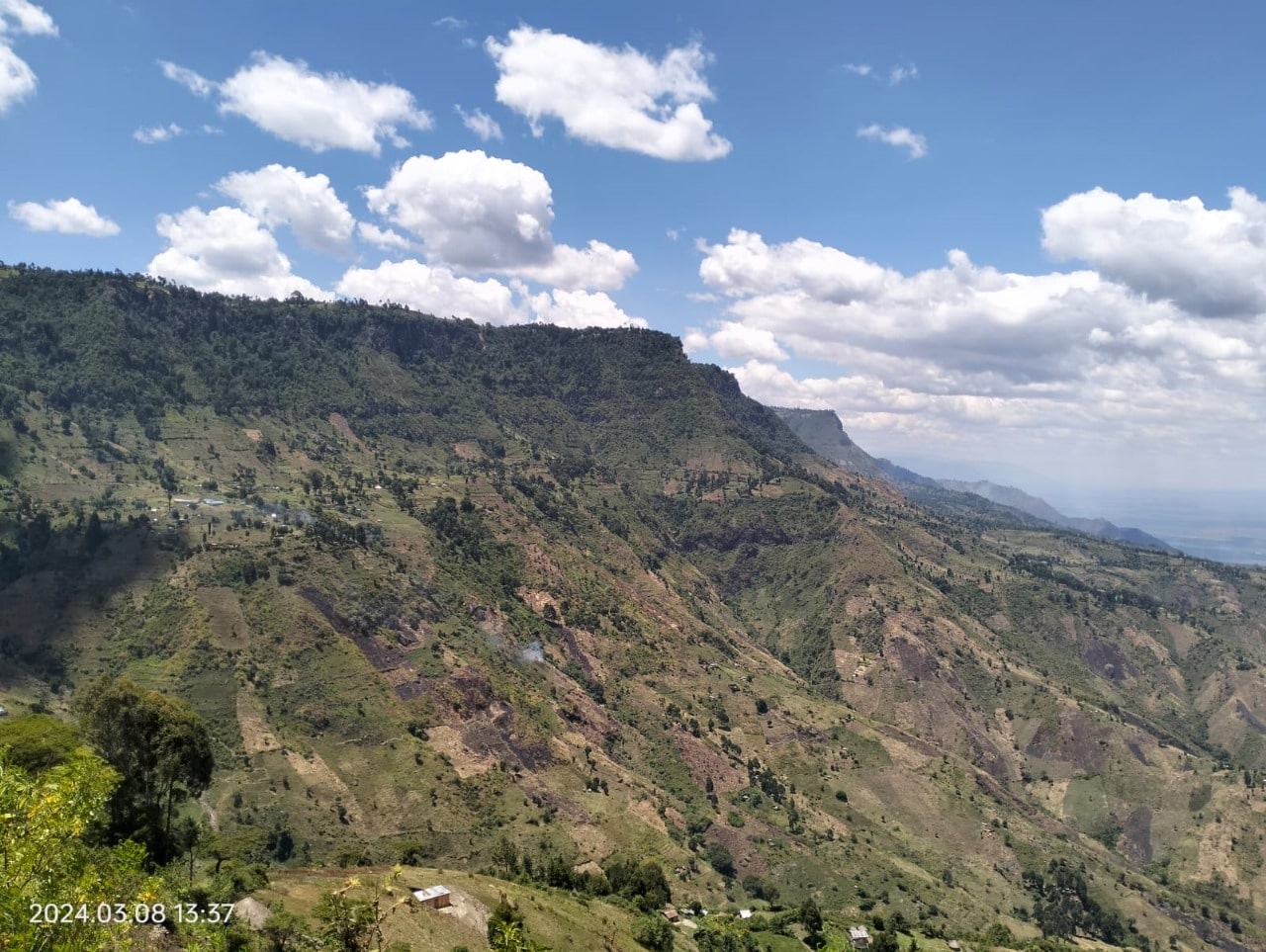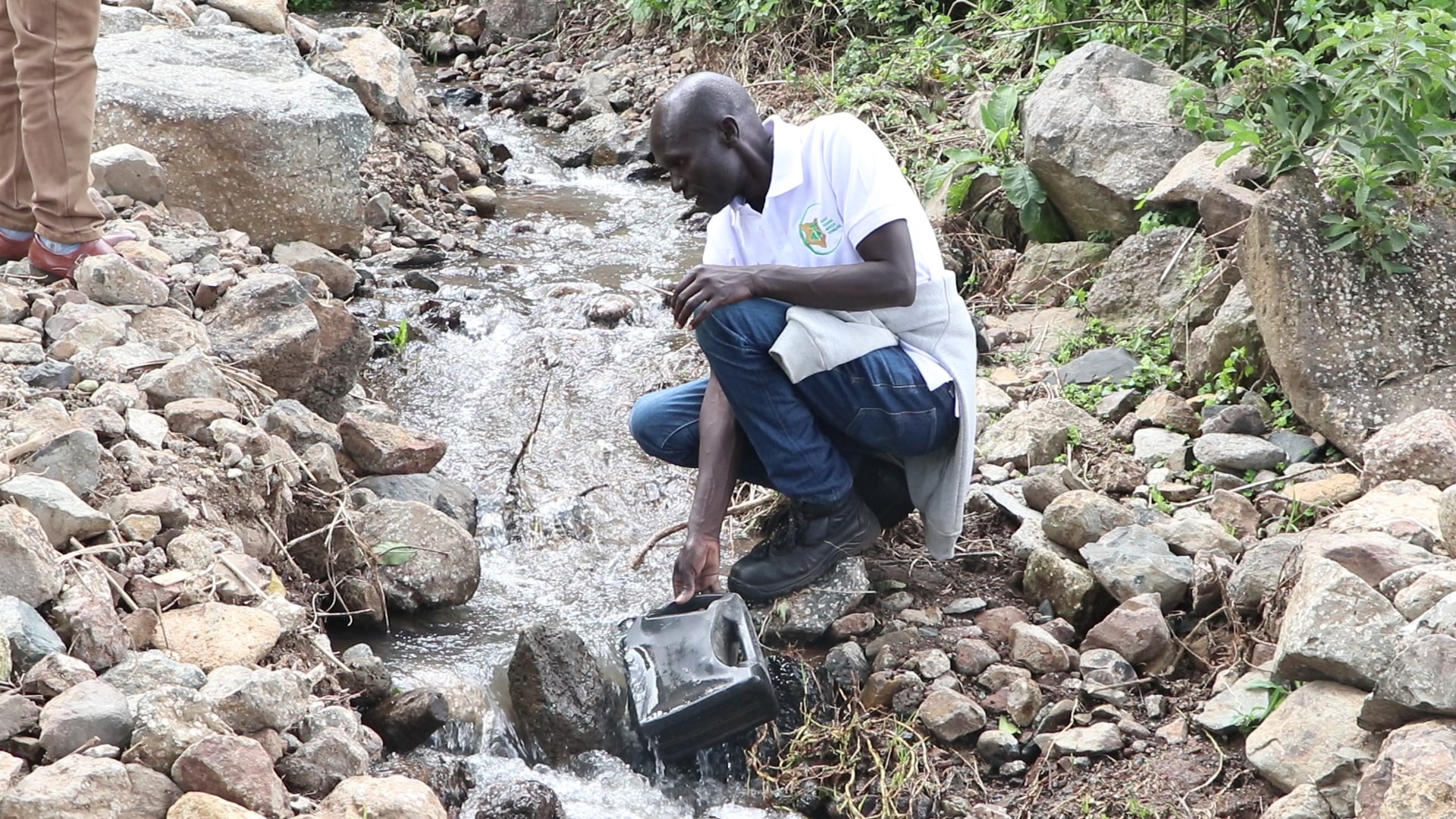

Why we value our partners
We believe that lasting environmental change is only possible through strong, inclusive partnerships. We value collaboration across all sectors; public, private, civil society, academia, and local communities recognising that each brings unique strengths and perspectives.
Our efforts are made possible by the generous support of donors, the commitment of individuals and institutions, and strategic alliances with government agencies. These partnerships are the backbone of our success, enabling us to deliver high-impact projects that safeguard ecosystems and uplift the communities that rely on them.
Together, we’re growing a greener, more resilient Kenya — one tree, one water tower, and one partnership at a time.
Chris Kandie – Programmes Manager, SKWT

Our History
A Decade of Growing Hope
Founded in 2010, Save Kenya Water Towers (SKWT) began as a grassroots campaign to address deforestation, soil erosion, and water scarcity in Kenya’s highlands. Over the years, it has grown into a national movement restoring degraded ecosystems, empowering communities, and championing climate justice.
We have planted tens of thousands of trees, trained hundreds of farmers and youth, and pioneered initiatives like the Green Ribbon: Biogas for Schools, tackling deforestation and energy poverty. In partnership with groups, we are restoring fragile landscapes such as the Spencer Line in the Elgeyo Hills—turning degraded slopes into thriving green corridors.
As a registered non-profit, SKWT continues to expand its mission beyond water towers to include youth leadership, sustainable land management, and climate resilience.
At our core, we believe restoration is not just about trees—it’s about people, dignity, and the future we want to build.
Our Beginnings
The founders of SKWT—community leaders, environmentalists, youth volunteers, and educators—were united by a shared conviction: that restoring nature is inseparable from restoring dignity and livelihoods. They mobilized action through tree planting drives, school-based conservation programs, and awareness campaigns targeting critical ecosystems such as the Mau, Cherangani, and Mt. Elgon forests.
Early efforts were simple but powerful. Communities gathered to plant indigenous trees, schools integrated environmental clubs into their activities, and youth groups began to see restoration as a source of purpose and opportunity. What started as scattered local action steadily gained momentum and visibility, laying the foundation for what SKWT is today.
Growth and Impact
Over the next decade, SKWT evolved from a campaign into a fully registered non-profit organization, able to expand its reach and build strong partnerships. Our work grew to support large-scale, community-led restoration across degraded catchments. We helped establish local tree nurseries, trained farmers and youth in indigenous seedling propagation, and linked restoration efforts with sustainable livelihoods and environmental education.
Tens of thousands of trees were restored in critical areas, bringing back vegetation cover, stabilizing soil, and protecting water sources. Hundreds of community members, particularly women and youth, gained skills in nursery management, climate-smart farming, and conservation leadership. In every landscape we worked, restoration became not only about saving trees but about strengthening resilience and improving daily life.
Innovation in Action
Recognizing that deforestation is often linked to energy poverty, SKWT launched the Green Ribbon: Biogas for Schools Initiative. This project reduces reliance on firewood in schools across the Rift Valley by providing clean, sustainable biogas energy. Beyond protecting forests, it improves health by cutting indoor smoke pollution, reduces costs for schools, and gives students more time to focus on learning instead of firewood collection.
This spirit of innovation continues to shape our work—bridging conservation with solutions that directly improve community wellbeing.
Strategic Partnerships
In late 2023, SKWT entered a new phase of growth through collaboration with WRI Africa. Together, we focused on the Elgeyo Hills, particularly the steep and heavily degraded Spencer Line. This fragile landscape had suffered years of deforestation and erosion, leaving local farmers vulnerable to declining soil fertility and unpredictable rainfall.
Through this partnership, SKWT mobilized restoration champions and smallholder farmers to rehabilitate degraded slopes. Using soil and water conservation techniques, reintroducing climate-resilient native species, and applying landscape monitoring tools, we began transforming vulnerable hillsides into thriving green corridors. These efforts not only stabilized ecosystems but also demonstrated the power of blending local knowledge with global expertise.
Partnerships like these have been critical in amplifying our work—bringing in technical support, research capacity, and visibility that ensures local action contributes to national and even global restoration goals.
Our Evolving Mission
While our roots are in protecting water towers, SKWT’s mission has steadily expanded to reflect the interconnected challenges communities face. Today, we see restoration as a pathway to address climate resilience, youth empowerment, and sustainable land management.
Our work now spans:
Community-driven forest restoration through tree planting, nursery establishment, and indigenous seedling propagation.
Climate-smart energy solutions such as the Green Ribbon Biogas Initiative.
Youth leadership and education, ensuring the next generation sees conservation as both duty and opportunity.
Sustainable land management practices including soil and water conservation and Farmer Managed Natural Regeneration (FMNR).
Collaborative monitoring and research, ensuring that every intervention is guided by science, evidence, and local knowledge.
Our Philosophy
At our core, SKWT is built on a simple belief: restoration is not just about trees—it is about people, dignity, and the future we want to build.
For us, a seedling represents more than a tree. It represents water for the next generation, soil that can support crops, and communities that can withstand the shocks of climate change. Every nursery we establish is also a classroom, every restoration site a training ground, and every project an opportunity for hope.
Looking Ahead
As SKWT moves into its second decade, we are embracing a broader vision. We will continue restoring Kenya’s water towers, but we are also expanding beyond them—working in landscapes where ecosystems and livelihoods are deeply intertwined.
Our priorities for the coming years include:
Scaling up restoration in fragile ecosystems through partnerships that link grassroots action to national and global initiatives.
Deepening youth engagement, providing leadership opportunities and skills for young people in conservation, energy innovation, and climate resilience.
Strengthening women’s participation, recognizing their vital role in restoration, energy access, and food systems.
Building resilience to climate change by integrating restoration with disaster risk reduction and sustainable livelihoods.
Expanding innovative solutions, from clean energy in schools to landscape monitoring systems that empower communities with data.
Our Story, Still Unfolding
The story of SKWT is one of determination, community, and hope. It is written every day by the thousands of Kenyans who believe in healing the land and restoring life, one seedling at a time. From the slopes of Elgeyo to the forests of Mau and Cherangani, our movement continues to grow—rooted in the conviction that when communities come together, degraded landscapes can be reborn.
Over the past decade, we have proven that grassroots action can drive large-scale change. As we look ahead, our journey is far from over. The challenges of deforestation, water insecurity, and climate change remain urgent. But so too does our resolve.
With every partnership forged, every student inspired, every farmer trained, and every tree planted, we come closer to our vision: a Kenya where ecosystems are restored, communities are resilient, and the future is secured.
I
VISION & MISSION
OUR VISION
To promote environmental protection and climate action for a better world
MISSION
To safeguard Kenya’s vital water towers through practical, impactful, and community-led solutions.
OUR CORE VALUES
INTEGRITY
We see integrity as the quiet strength behind our work being transparent, fair, and deeply committed to what we stand for
INTEGRITY
We see integrity as the quiet strength behind our work being transparent, fair, and deeply committed to what we stand for
TEAM WORK
Means working together, staying aligned, and keeping each other motivated.
COLLABORATION
Collaboration at SKWT means co-creating restoration solutions with communities, partners, and institutions – combining knowledge, resources, and action to heal ecosystems and uplift livelihoods.
RESPECT
&
INCLUSION
To us, this means valuing every voice and actively involving women, youth, and Indigenous communities in our conservation and restoration efforts.
OUR PILLARS
SUSTAINABILITY
Ensuring long term environmental, social and economic viability
community engagement and education
Empowering local communities through awareness and involvement
REPRESENTATION
Indigenous people representation and dialogue
guiding performance & inspiration
Providing strategic leadership and motivation that drives impactful environmental action, community empowerment, and restoration excellence.
